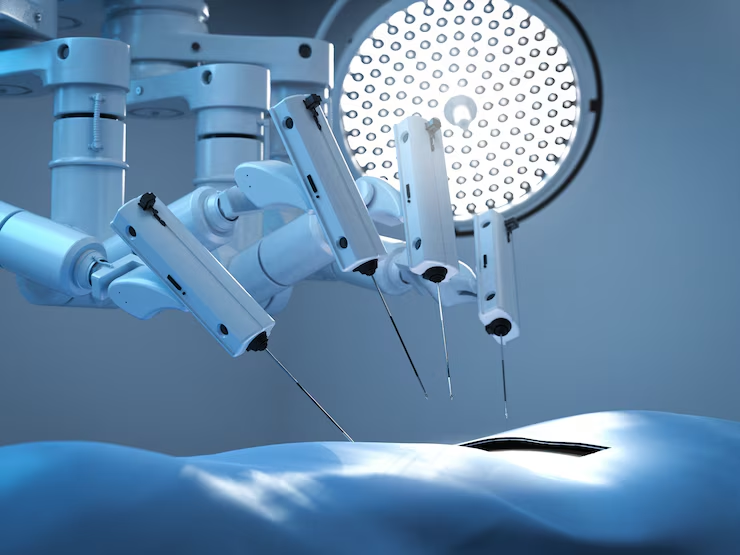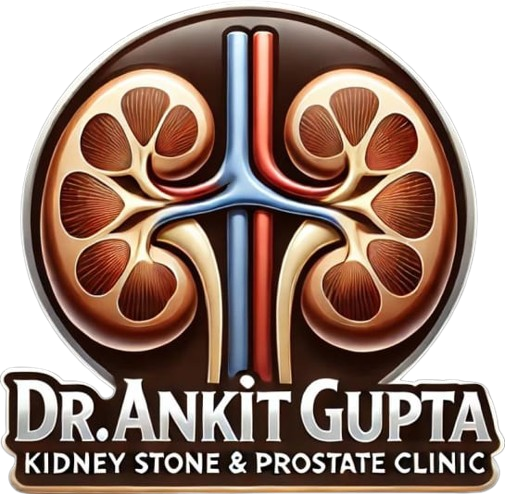Laparoscopic & reconstructive Surgery
Home > Laparoscopic & reconstructive Surgery

Laparoscopic & reconstructive Surgery
Laparoscopic and reconstructive surgeries are minimally invasive techniques utilizing small incisions and specialized instruments. Laparoscopic surgery involves inserting a camera and tools through keyhole incisions, allowing surgeons to operate with reduced tissue damage. reconstructive surgery, such as with the da Vinci system, enhances this approach by providing surgeons with a 3D view and precise instrument control via reconstructive arms. Benefits of both methods include less pain, minimal scarring, shorter hospital stays, and faster recovery times, making them effective alternatives to traditional open surgeries.
Know More
About Laparoscopic & Reconstructive Surgery
-
 Symptoms
Symptoms
-
 Diagnosis
Diagnosis
-
 How We Perform
How We Perform
-
 Why Is Treatment Needed?
Why Is Treatment Needed?
-
 Treatment
Treatment
-
 Rehabilitation
Rehabilitation
-
 Prevention
Prevention
Laparoscopic and reconstructive surgeries are typically considered when patients experience conditions that significantly affect their quality of life and are not responsive to conservative treatments. Common indications include:
Abdominal Pain: Persistent discomfort due to conditions like gallstones, hernias, or appendicitis.
Digestive Issues: Chronic problems such as acid reflux, irritable bowel syndrome, or Crohn’s disease.
Pelvic Pain: Conditions like endometriosis or fibroids causing significant discomfort.
Obesity: When lifestyle changes have not been effective, bariatric surgery may be considered.
Cancer: Certain cancers requiring surgical intervention for treatment.
Accurate diagnosis is essential to determine the suitability of laparoscopic or robotic surgery:
Imaging Studies: Ultrasound, CT scans, and MRIs to visualize internal structures.
Endoscopy: Direct visualization of the gastrointestinal tract.
Biopsy: Tissue sampling for histopathological examination.
Laboratory Tests: Blood tests to assess organ function and detect abnormalities.
These diagnostic tools help in planning the appropriate surgical approach.
Laparoscopic and reconstructive surgeries are performed using specialized techniques that allow surgeons to operate with high precision through small incisions. These procedures are designed to minimize trauma and improve recovery outcomes.
Key Points:
Preoperative Preparation:
Patients undergo imaging, lab tests, and anesthesia evaluation. Fasting is usually required the night before surgery.Anesthesia Administration:
General anesthesia is given to ensure the patient remains unconscious and pain-free throughout the procedure.Trocar Insertion:
Small incisions (usually 0.5–1 cm) are made in the abdomen to insert trocars (thin tubes) that serve as entry points for the camera and instruments.CO₂ Insufflation:
Carbon dioxide gas is used to inflate the abdomen, creating space for better visibility and safer instrument movement.Camera and Instrument Placement:
A high-definition laparoscope (camera) is inserted for internal visualization. Robotic arms or laparoscopic tools are inserted through other ports.Surgical Procedure:
The surgeon performs the operation while viewing the surgical site on a monitor (laparoscopy) or controlling robotic arms at a console (robotic surgery) for enhanced precision.Organ or Tissue Handling:
Diseased tissue (e.g., tumor, kidney, prostate) is carefully dissected and removed through one of the small incisions using a specimen retrieval bag.Closure of Incisions:
Instruments are withdrawn, gas is released, and the small incisions are closed with sutures or surgical glue, then dressed with sterile bandages.Postoperative Monitoring:
The patient is monitored in recovery for vital signs, pain control, and any signs of bleeding or complications.
Laparoscopic and robotic surgeries are advanced, minimally invasive techniques used in urology to treat a variety of conditions with smaller incisions, less pain, and faster recovery. These procedures use specialized instruments and cameras to perform precise operations inside the body.
Key Points:
Minimally Invasive Approach:
Surgeries are performed through small incisions using a camera and thin instruments, reducing trauma to surrounding tissues.Robotic Assistance:
In robotic surgery, the surgeon controls robotic arms from a console, allowing greater precision, flexibility, and control during complex procedures.Common Procedures:
These techniques are used for prostatectomy, nephrectomy (kidney removal), pyeloplasty, ureteral reimplantation, and tumor removal.Reduced Pain and Scarring:
Smaller incisions result in less post-operative pain, minimal scarring, and lower risk of wound infections.Faster Recovery Time:
Patients typically experience shorter hospital stays, quicker return to normal activities, and less overall disruption.High Surgical Precision:
Enhanced visualization and precision lead to better preservation of nerves and healthy tissues, especially important in prostate and kidney surgeries.Lower Risk of Complications:
Minimally invasive techniques reduce the risk of bleeding, infection, and other surgical complications.Better Cosmetic Outcomes:
Small incisions lead to more aesthetically pleasing results, which is a significant consideration for many patients.
Laparoscopic and robotic surgeries are minimally invasive techniques offering several benefits:
Laparoscopic Surgery: Involves small incisions through which a camera and instruments are inserted. The surgeon directly controls the instruments.
Reconstructive Surgery: Utilizes a reconstructive system controlled by the surgeon from a console, providing enhanced precision and a 3D view of the surgical site.
Both techniques result in smaller scars, reduced pain, and quicker recovery compared to traditional open surgery.
Post-operative rehabilitation is crucial for recovery:
Physical Therapy: Helps in regaining strength and mobility.
Pain Management: Use of medications and techniques to manage discomfort.
Nutritional Support: Guidance on diet to support healing.
Psychological Counseling: Addressing emotional well-being during recovery.
Both laparoscopic and robotic surgeries typically result in shorter hospital stays and faster return to daily activities.
While not all conditions can be prevented, certain measures can reduce the risk of requiring surgery:
Healthy Diet: Maintaining a balanced diet to prevent obesity and related conditions.
Regular Exercise: Engaging in physical activity to promote overall health.
Regular Screenings: Participating in recommended screenings for early detection of conditions like cancer.
Avoiding Smoking and Excessive Alcohol: Reducing risk factors for various diseases.
Adopting these lifestyle changes can contribute to better health and potentially reduce the need for surgical interventions.
WHY US?
Why Choose Dr. Ankit Gupta
At our clinic, Dr. Ankit Gupta offers expert care in urology, kidney transplantation, and andrology. With extensive experience in reconstructive and microscopic urology, as well as proficiency in laparoscopic and reconstructive surgeries, Dr. Gupta employs advanced techniques to ensure optimal outcomes and smoother recoveries for his patients.
70,000+
Patients Experience
10,000+
endoscopic surgeries
1000+
Urologic Oncologist surgeries
1000+
Invasive Urology Surgeries
Check Surgery Cost
We believe in transparency. You can enquire about the Surgery Cost and we will help you with complete detailed treatment process till your recovery.
Frequently Asked Questions
It’s a minimally invasive surgical technique using small incisions, a camera, and instruments to operate on urinary and reproductive organs, such as the kidneys, bladder, and prostate.
Robotic surgery is a form of laparoscopic surgery where the surgeon uses a robotic system (like the da Vinci® robot) for greater precision, control, and 3D visualization.
Common applications include prostate cancer, kidney tumors, ureteric obstruction, bladder reconstruction, and adrenal gland disorders.
They offer smaller incisions, less blood loss, reduced pain, shorter hospital stays, faster recovery, and minimal scarring compared to open surgery.
Yes. When performed by experienced urologic surgeons, they are safe and have a low complication rate.
Yes. Both laparoscopic and robotic surgeries are performed under general anesthesia.
Most patients can resume light activities in a few days and return to full normal activities within 2–4 weeks, depending on the procedure.
Robotic surgery provides enhanced dexterity and precision, especially in complex urologic cases like prostate or kidney cancer. It can lead to better functional outcomes, but the best approach depends on the patient’s specific condition.
What Our Patients Say
Based on 160 reviews








My experience with Dr. Ankit Gupta was very good. He treated my left kidney stone with laser surgery. I was discharged the next day after the surgery. He is the best urologist and kidney stone doctor in Gurgaon. 🙏
Best Regards
Subodh Rathore

